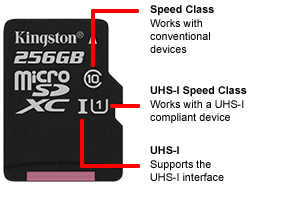Micro Sd Card Markings Explained
But did you know that all memory cards are not the same and they belong to different classes of cards. Yes, each class is different from the other one and not all classes are supported on your devices. Read on to find out more about what are the different kinds of microSD cards and which one fits the bill for you.
SD Card: Speed Classes, Sizes, and Capacities Explained Getting yourself in a memory card muddle and not sure which card to buy? We look at memory card speeds and the fastest memory card on the market to help explain the differences so you can find out what’s the best card for you. Not sure what the difference is between a £50 Class 2 SD and a £450 Class 10 SDHC memory card? Desene animate film in romana. We’ve split them up into their categories and broken down the speed jargon by translating it into real speed ratings so you can decide if a certain memory card is worth the extra money. SD card types SD, SDHC and SDXC As SD cards have begun to physically shrink down in size over the years, the SD card can be considered the ‘full-size’ variant. It’s typically what is used in most modern digital cameras and nearly all laptops will come equipped with an SD card reader slot. Where things can become confusing is when you see ‘SDHC’ and ‘SDXC’.

The first stands for ‘Secure Digital High Capacity’. This was initially introduced to cover SD cards with a capacity above 2GB and below 32GB. The latter stands for ‘Secure Digital eXtra Capacity’, which go far beyond 32GB in size. You can buy SDXC cards with a whopping 2TB of storage. SD, SDHC and SDXC all physically look the same, therefore they’ll all fit in a regular SD card slot. Problems might arise depending on the device you’re looking to use them in.
Micro Sd Card Types Explained
Older devices that pre-date SDXC’s introduction might therefore not be compatible, so be sure to check your product’s specifications. Devices are backwards compatible, so an SDXC-compatible device can use SDHC and SD cards. An SDHC-compatible device can use SDHC and SD cards, but will not be able to use SDXC cards. MiniSD and MiniSDHC The MiniSD was the first miniaturisation of the SD card and is around half the height of the original SD card. You can also find miniSDHC cards, which expanded storage to 4GB. Again, you’ll need to make sure your device specifically supports miniSDHC rather than just miniSD. The miniSD card never gained much traction, however, so devices that use it are relatively uncommon.
Often, miniSD cards will come with an adaptor that can convert it into a full-size SD card, which makes it easier to use with laptop card readers. MicroSD, MicroSDHC and MicroSDXC The microSD is the smallest version. Toad for oracle authorization key.
Watch da vinci code movie. You might have also seen it referred to as TransFlash or abbreviated as a TF card. MicroSD cards, as the name implies, are physically tiny and came about predominantly to be used in smartphones that would benefit from a much smaller card. Like the full-size SD card, there are also microSDHC and microSDXC variants that expanded the storage beyond the initial limitations.

Right now, the largest microSDXC available is 128GB, which isn’t as much as the largest SDXC card but then you’re limited by the physical size of the card. When buying a microSD, microSDHC or microSDXC card you’ll usually get a full-size SD card adaptor as well. Again, SDXC-compatible devices will be backwards compatible with microSDHC and microSD cards, and microSD cards can be used in microSDHC devices. SD card speed classes The next area of confusion is around speed classes. These are how different SD, miniSD and microSD cards are rated in terms of read and write speeds. These are important particularly when the cards are used in camcorders or action cameras as the speed of the card will limit the video resolution and bit rate you’re able to record.
Markings On Micro Sd Card
High-resolution and high bit rate video requires a lot of data to be written to the card very quickly. Still cameras with high resolutions and fast burst shooting will also take modern cards to their limits. The devised a way to standardise the speed ratings for different cards. These are defined as ‘Speed Class’ and refer to the absolute minimum sustained write speeds. Cards can be rated as Class 2 (minimum write speed of 2MB/s), Class 4 (4MB/s), Class 6 (6MB/s) or Class 10 (10MB/s).
Micro Sd Card Target
It’s important to note that these are the minimum, so it’s entirely possible a card can achieve faster speeds but these give you an impression of the least you can expect. Many SD card manufacturers will also list a specific speed alongside the Class rating. This means a card can be Class 10 but also be listed as ‘up to 80MB/s’. The wording is important, as that’s the best you can expect but not necessarily what you’ll always achieve. You might also see a description such as ‘533x’. This refers to a multiplication of the speed of an old CD-ROM (150KB/s). So in this case 533 x 0.15 = 80MB/s (as there are 1,000KB in a MB).